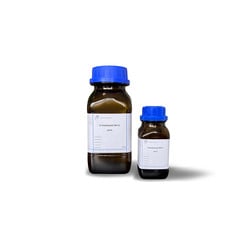You have no items in your shopping cart
Panthenol
Panthenol (also called pantothenol) is the alcohol analog of pantothenic acid (vitamin B5) and is therefore a provitamin B5. In the body it is quickly oxidized to pantothenic acid. It is a viscous liquid that is transparent at room temperature. Panthenol is used as a moisturizer and wound healing cream in pharmaceuticals and cosmetics.
In pharmaceuticals and cosmetics, panthenol is a moisturizing liquid used in creams, ointments, lotions, shampoos, nasal sprays, eye drops, lozenges, and in contact lens cleaning solutions.
In topical forms, it is used to treat sunburns, mild burns, minor lesions and other minor skin conditions (at concentrations of 2-5%). It improves hydration, reduces itching and inflammation of the skin, improves elasticity and accelerates skin healing. Sometimes combined with allantoin for this purpose, it is mainly used in the treatment of diaper rash in infants and is also recommended by tattooists after a tattoo.
It binds easily to hair shafts and is therefore a common ingredient in shampoos and hair conditioners (in concentrations of 0.1–1%). It coats the hair and adheres to their surface, it lubricates the hair shaft and gives it a shiny appearance.
Panthenol easily penetrates the skin and mucous membranes (including the intestinal wall), where it is quickly oxidized to pantothenic acid. Pantothenic acid is extremely hygroscopic, which means it binds and absorbs efficiently in water. It is also used in the biosynthesis of coenzyme A, which is involved in a wide variety of enzymatic reactions and thus cell growth.

